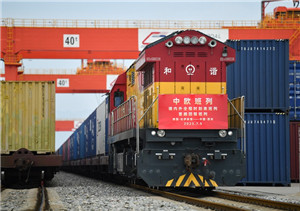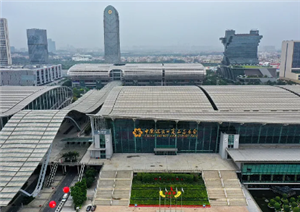Located in the southernmost part of the Chinese mainland, Guangdong province adjoins Fujian province to the east, the South China Sea to the south, Guangxi Zhuang autonomous region to the west, and Jiangxi and Hunan provinces to the north.
China's second-largest river — the Pearl River — flows through Guangdong. To the east of the Pearl River Estuary, it is the Hong Kong Special Administrative Region and to the west, Macao Special Administrative Region. The southwestern Leizhou Island in Guangdong is separated from Hainan province by the Qiongzhou Strait.
Covering an area of 179,700 square kilometers, of which 1,448 sq km are islands, the province has 21 prefecture-level cities.
Guangdong's history dates back to 214 BC, when the Qin Dynasty (221-206 BC) conquered Lingnan and established three commanderies, Nanhai, Xiang, and Guilin within the region. At the greatest extent, Nanhai Commandery covered the present-day Guangdong province, while Guilin Commandery covered the western part of present-day Guangdong province. Lingnan has since begun to undergo an administrative division.
After the establishment of the People's Republic of China, Guangdong made mild administrative adjustment based on historical divisions. In 1988, the province applied a system whereby the prefecture-level cities managed the counties and the towns managed villages. In 1994, the province was divided into 21 prefecture-level cities. During the 1990s, a number of counties were converted into county-level cities. Since 2000, due to urban expansion, several county-level cities and counties were changed into municipal districts.
Guangdong is the province with the most complete representation of ethnic groups in China. The population of ethnic groups accounts for 3 percent of the total in the province, and mainly consists of the Zhuang, Yao, She, Hui and Man ethnic groups.
At the end of 2023, the population in Guangdong province was 127.06 million, an increase of 0.49 million compared with the end of 2022. The permanent resident population in urban areas was 95.83 million, accounting for 75.42 percent of the resident population.
Guangdong boasts an abundance of natural resources, including water, mineral, wildlife and marine resources. In 2022, the total amount of fresh water in Guangdong was 223.36 billion cubic meters, an increase of 82.1 percent from 2021.
By the end of 2022, 151 types of minerals had been discovered in the province, with confirmed reserves for 105 types and a total of 2,988 mineral deposits. About 1,018 species of terrestrial vertebrate wildlife were found in the province, including 113 species of amphibians, 173 species of reptiles, 577 species of birds, and 155 species of mammals.
The province is rich in marine, mineral, and energy resources. By the end of 2022, the sea area of Guangdong covered 419,300 square kilometers, which is 2.3 times of its land area. The coastline stretches for 4,084.48 kilometers, the longest in the country. There are 1,963 islands, more than 90 percent of which are uninhabited, and over 50 percent of these islands are smaller than 500 square meters.
The marine biodiversity includes 406 species of phytoplankton, 416 species of zooplankton, 828 species of benthic organisms, 1,297 species of nekton, and over 1,200 species of fish.
Guangdong is the first province in China to conduct maritime trade and international migration. It is the ancestral home of more than 30 million overseas Chinese from 160 countries and regions. With the combination of overseas Chinese culture and local culture, the culture in Guangdong is unique and an important part of the Lingnan culture. The folk arts and customs also lay a rich foundation for Guangdong's culture.
Guangdong is one of the frontiers of China's reform and opening-up policy. It is one of the most attractive places for investors with a great deal of market vigor. It is also one of the fastest growing provinces in economy in China, with the most advanced business and trade. In 2023, Guangdong's GDP reached 13.56 trillion yuan ($1.90 trillion), an increase of 4.8 percent over 2022. The added value of primary industry was 554.07 billion yuan, an increase of 4.8 percent year on year; that of secondary industry was 5.44 trillion yuan, an increase of 4.8 percent; and of the tertiary industry was 7.57 trillion yuan, an increase of 4.7 percent.

















